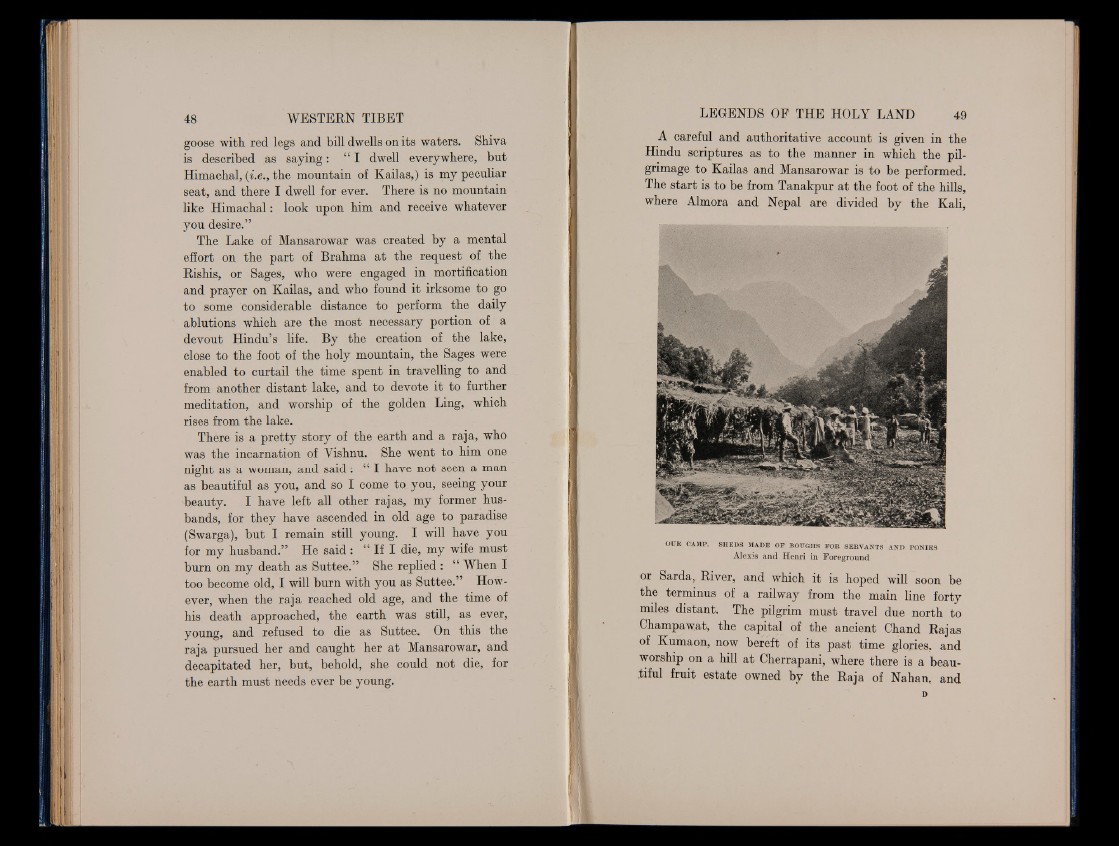
goose with red legs and bill dwells on its waters. Shiva
is described as saying: “ I dwell everywhere, but
Himachal, {i.e., the mountain of Kailas,) is my peculiar
seat, and there I dwell for ever. There is no mountain
like Himachal: look upon him and receive whatever
you desire.”
The Lake of Mansarowar was created by a mental
effort on the part of Brahma at the request of the
Rishis, or Sages, who were engaged in mortification
and prayer on Kailas, and who found it irksome to go
to some considerable distance to perform the daily
ablutions which are the most necessary portion of a
devout Hindu’s life. By the creation of the lake,
close to the foot of the holy mountain, the Sages were
enabled to curtail the time spent in travelling to and
from another distant lake, and to devote it to further
meditation, and worship of the golden Ling, which
rises from the lake.
There is a pretty story of the earth and a raja, who
was the incarnation of Vishnu. She went to him one
night as a woman, and said: “ I have not seen a man
as beautiful as you, and so I come to you, seeing your
beauty. I have left all other rajas, my former husbands,
for they have ascended in old age to paradise
(Swarga), but I remain still young. I will have you
for my husband.” He said: “ If I die, my wife must
burn on my death as Suttee.” She replied : “ When I
too become old, I will burn with you as Suttee.” However,
when the raja reached old age, and the time of
his death approached, the earth was still, as ever,
young, and refused to die as Suttee. On this the
raja pursued her and caught her at Mansarowar, and
decapitated her, but, behold, she could not die, for
the earth must needs ever be young.
A careful and authoritative account is given in the
Hindu scriptures as to the manner in which the pilgrimage
to Kailas and Mansarowar is to be performed.
The start is to be from Tanakpur at the foot of the hills,
where Almora and Nepal are divided by the Kali,
OCR. CAMP. SHEDS MADE OF BOUGHS FOR SERVANTS AND PONIES
Alexis and Henri in Foreground
or Sarda, River, and which it is hoped will soon be
the terminus of a railway from the main line forty
miles distant. The pilgrim must travel due north to
Champaw;at, the capital of the ancient Chand Rajas
Kumaon, now bereft of its past time glories, and
worship on a hill at Cherrapani, where there is a beautiful
fruit estate owned by the Raja of Nahan, and